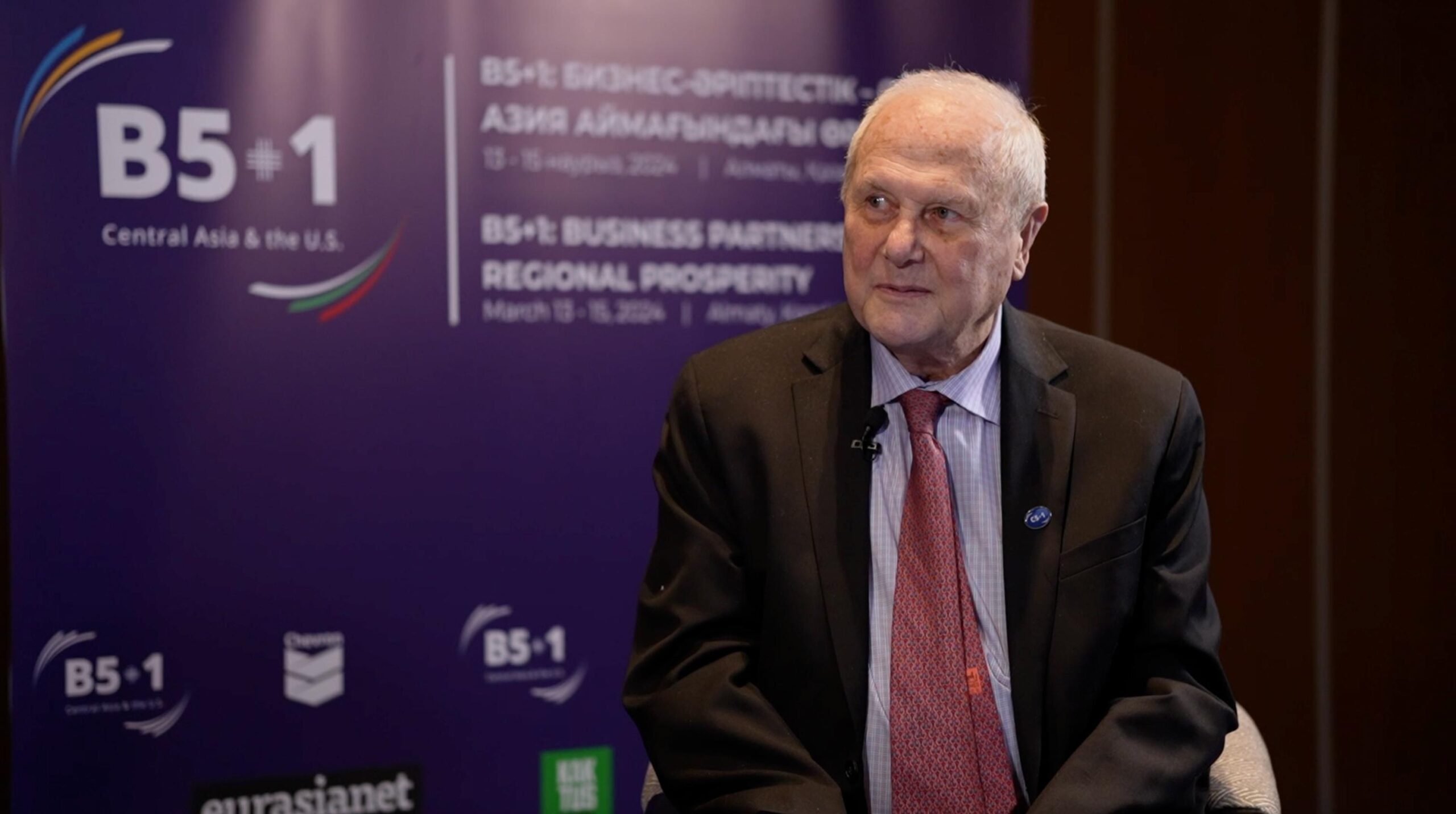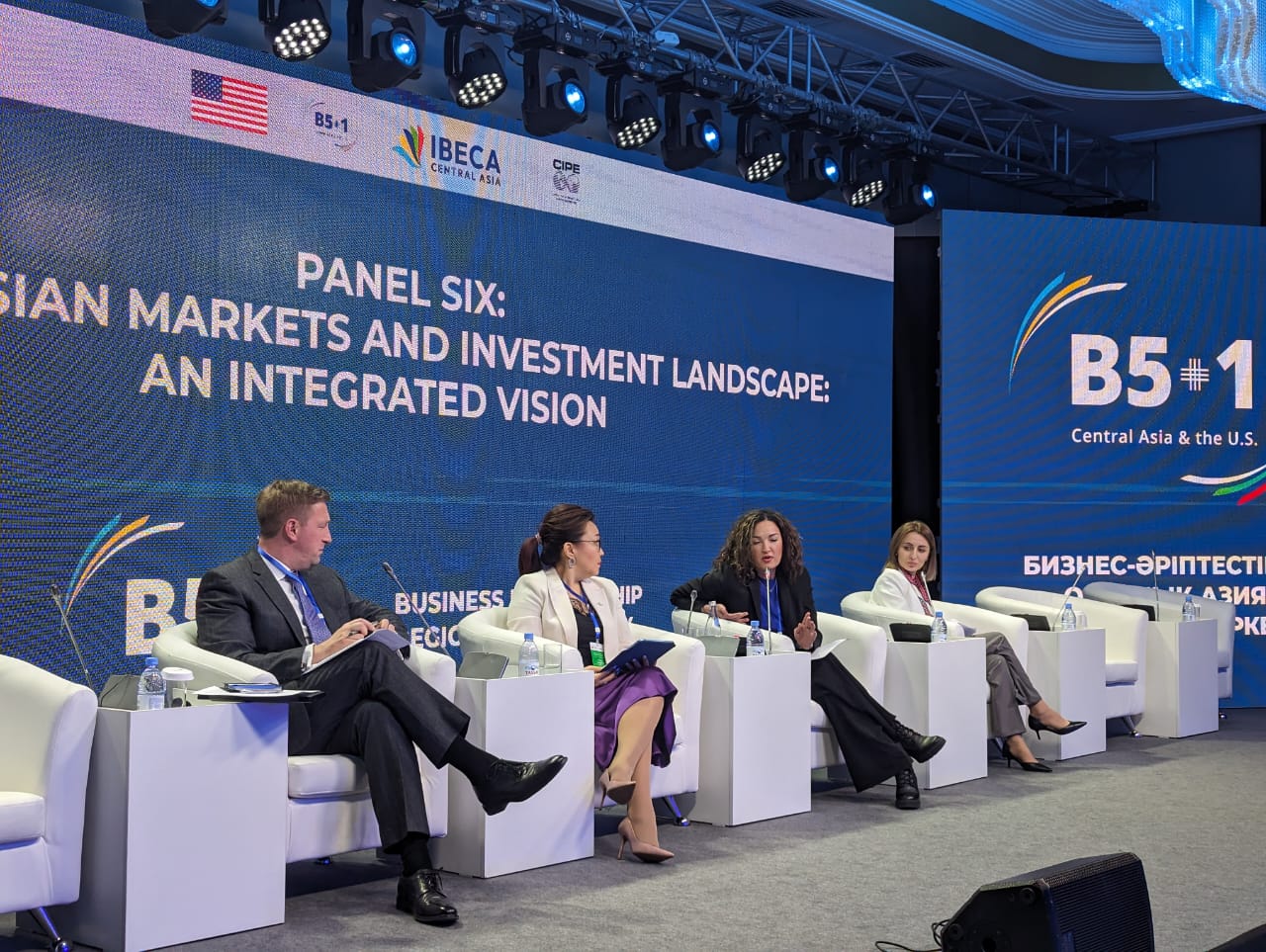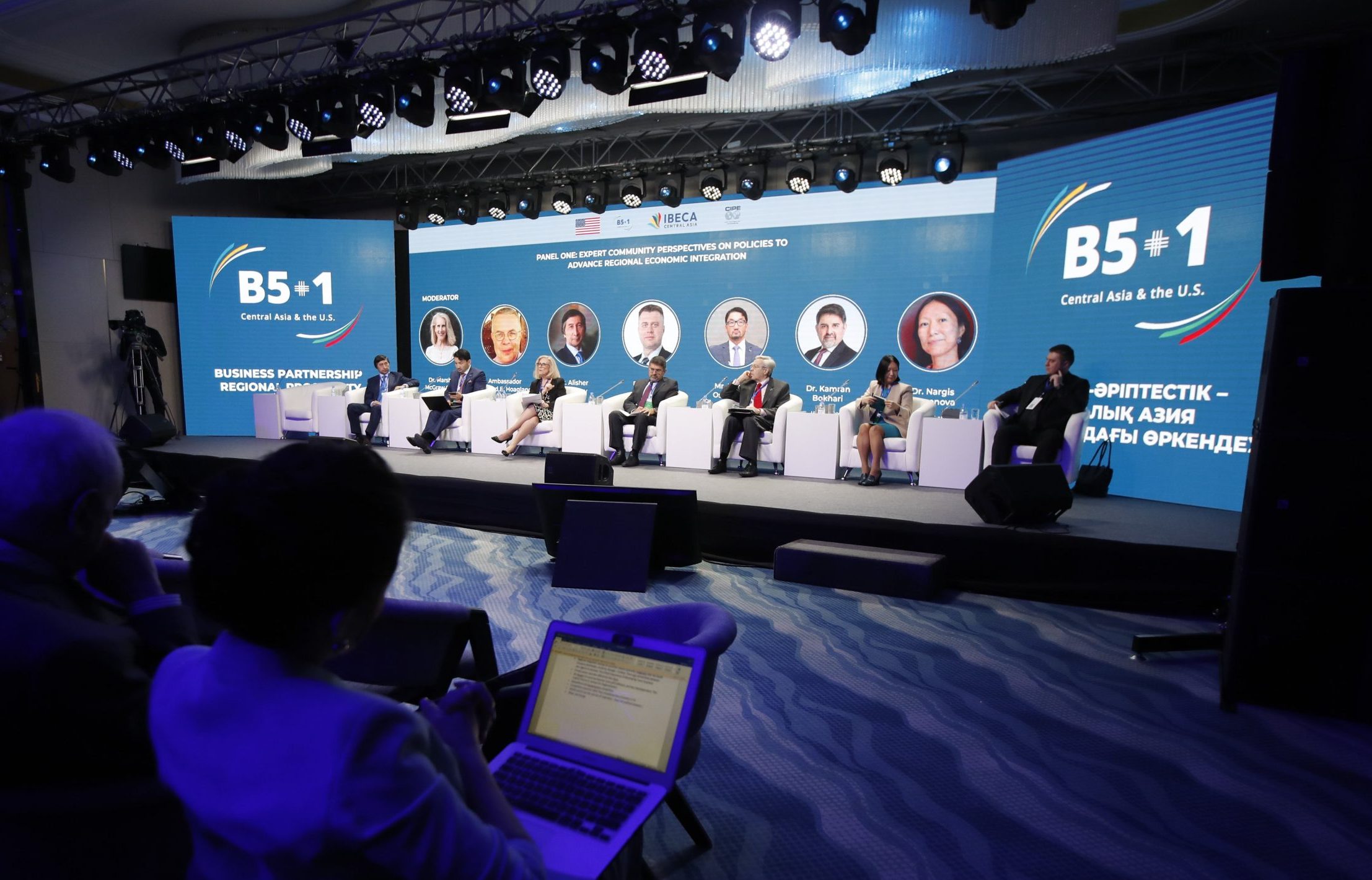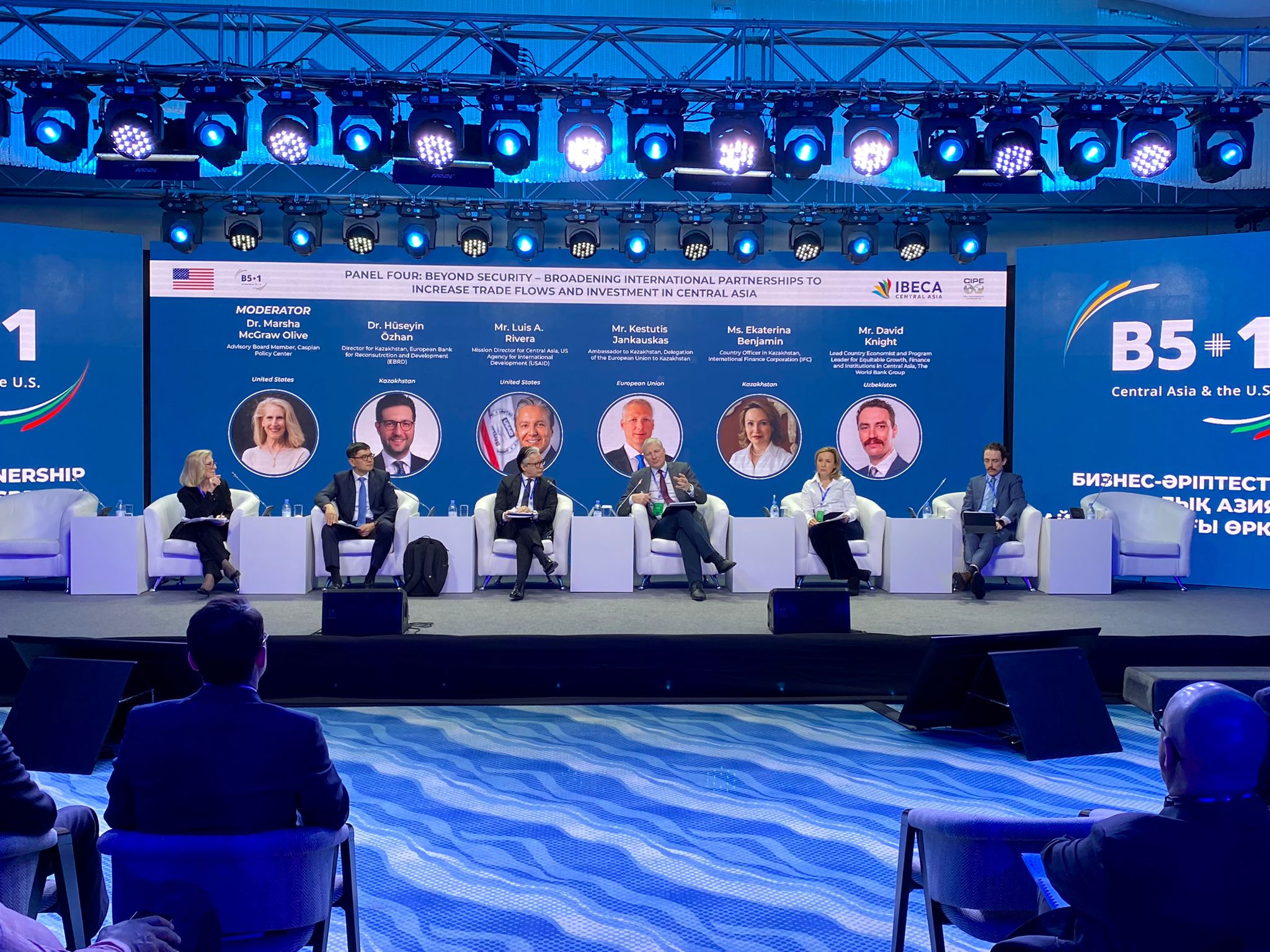ASTANA—A spirit of cooperation in Central Asia is at an unprecedented high, said a prominent American scholar, Dr. Frederick Starr, in an interview with The Astana Times. Starr, the founding chairman of the Central Asia – Caucasus Institute and the Silk Road Studies Program, shared his insights into the region’s dynamics, the importance of regional cooperation, and Central Asia’s future decided and led by the region’s countries.

Dr. Frederick Starr. Photo credit: screenshot from The Astana Times YouTube interview with Dr. Starr
“A spirit of cooperation has never been higher. Every Central Asian country is seeking to build a structure of cooperation with its neighbors. They can disagree on some things. You know, just like marriages, you don’t have to agree on everything, but these are things you want to structure,” said Starr, who has a deep understanding of the region’s dynamics.
Starr was on a short visit to Kazakhstan to attend the B5+1 forum in Almaty on March 13-15, the private-sector-led counterpart to the C5+1 diplomatic platform founded in 2015 to enhance dialogue between Central Asia and the United States.
The forum brought together more than 250 business leaders, investors, policymakers, and experts to discuss the challenges and opportunities of doing business in Central Asia. The platform, which is an important outcome of the C5+1 president summit in September 2023 in New York, convened the five Central Asian nations – Kazakhstan, the Kyrgyz Republic, Tajikistan, Turkmenistan, and Uzbekistan – with their counterparts in the United States.

The flags of the Kyrgyz Republic, Tajikistan, the United States, Kazakhstan, Turkmenistan and Uzbekistan. Photo credit: Center for International Private Enterprise (CIPE)
“One of the strong themes at this conference was the need to remove barriers within Central Asia. There is no, for example, a business visa for the whole region,” Starr explained. “It was very productive because for once the Central Asians were talking directly face to face with the American officials and investors and vice versa.”
Central Asia-led and formed narrative
While stressing the importance of such platforms as C5+1 and B5+1, Starr emphasized the need to develop Central Asia’s independent institutions, free from external influence.
“That represents the new frontier,” he stated.
Historical successes, such as the declaration of a Central Asian Nuclear Weapon Free Zone (CANWFZ) and the formation of the now defunct Central Asia Economic Union, illustrate the region’s capacity for self-led collaboration.

In a joint communique, the forum participants called C5+1 governments and businesses “to unite efforts to position Central Asia as an attractive destination, rather than merely a transit zone in global value chains.” Photo credit: CIPE
According to Starr, despite these strides towards regional solidarity, the current landscape is cluttered with external alliances, overshadowing the lack of Central Asian-specific organizations.
“The only world region without a strong functioning regional institution is Central Asia. You are trying to develop the economy without any regional structures. It is like driving with the handbrake on. You can’t do it. You have to have your own regional structures without outsiders,” said Starr.
He commended Kazakhstan’s efforts in implementing reforms, describing them as “important and timely.”
“Kazakhstan has done a wonderful job of establishing its position in the region and the world. To move further, it must link arms with its neighbors and become part of an active and organized Central Asia,” said Starr, long an advocate for a stronger regional agency.
Boosting the region’s investment attractiveness
Central Asia acting together as a collective market would be a more attractive environment for business operations for foreign investors. The current system, where countries have separate legal, visa, and tax frameworks, deters economic growth, said the scholar, who has written 20 books and about 200 articles.
“Think of it this way: You are a business leader from Singapore, South America or the United States. Do you want to come to Central Asia and deal with Kazakhstan with 20 million people? Or do you want to add 40 million from Uzbekistan, 10 million from Kyrgyzstan, 10 million from Tajikistan, and so on? In other words, it is much more effective for a foreign investor to have a region,” he said.

The first day of the forum focused on what makes Central Asia unique, the common obstacles faced by businesses, and the crucial role of private sector involvement in achieving the economic and energy objectives of the C5+1, per the C5+1 declaration signed in September 2023 in New York. Photo credit: CIPE
He pointed out the challenges faced by Central Asian countries due to their relatively small size and population, which makes them less attractive to foreign investors. “Individual countries of Central Asia, on a world scale are not large. Therefore, they are less interesting to a foreign investor,” Starr noted.
He emphasized the need for regional solutions to attract investment, such as simplifying visa processes for businesspeople. “If the countries of Central Asia made it easier for foreign investors to work in more than one country, like having a business visa instead of five separate visas, it would have instant and positive results,” he said.
According to the scholar, there are practical steps that can be easily taken.
“This will not only increase business generally but also the kinds of sustainable businesses that you want. Both sides have to be very candid and honest in identifying the impediments and then removing them,” said Starr.
The Middle Corridor’s potential
Starr also spoke about the Trans-Caspian International Transport Route, also known as the Middle Corridor, a route intended to connect Central Asia with global markets more efficiently.
While acknowledging that the corridor is not “yet a reality,” he stressed its potential significance.

The second day of the forum welcomed international insights into enhancing trade and investment in Central Asia, featuring keynotes from Dr. S. Frederick Starr, along with Mr. Henrik Hololei, who serves as a Hors Classe Adviser at the Directorate-General for International Partnerships under the European Commission. Photo credit: CIPE
“Simply building the route does not mean victory; there is a three-dimensional job in which you have to attend to everything from insurance to storage facilities. All those things have to be good. If they are there, then this Middle Corridor will be good,” he said.
Starr, who had long campaigned for the re-inclusion of Afghanistan into a greater Central Asia vision, also projected the possibility of a southern corridor towards India via that war-torn country, saying it could be a game changer for regional trade dynamics.
“I personally think it would be extremely valuable to Kazakhstan, Uzbekistan, Tajikistan, Turkmenistan – all the countries. But so far this is not on the agenda yet,” said Starr.
Starr stressed Kazakhstan’s trade with Afghanistan, viewing it as a step toward realizing this southern corridor. In 2023, Kazakhstan traded with Afghanistan for $636.5 million, in which Kazakh exports were $615 million, according to data from the Bureau of National Statistics.
“They want to double it this year. I think if this trend continues, it will create an environment in which both sides realize that they would benefit from a railroad line going through Afghanistan from Central Asia. I am optimistic for the long run, even if it is not going to happen tomorrow,” said Starr.
Vision for a united Central Asia
Starr advocated for stronger regional cooperation in Central Asia. While he observes that a “spirit of cooperation has never been higher,” the region can push forward with practical solutions toward becoming more united.
“Central Asia is the only world region without a structure of interaction, organizations, institutions, to encourage interaction in every field,” Starr said.
One such institution does exist, though, in the shape of the International Fund for the Salvation of the Aral Sea (IFAS). Since Jan. 1, 2024, Kazakhstan has assumed the three-year rotating chairmanship in IFAS.
Later this year, Astana is also slated to host the sixth annual meeting of the Central Asian heads of state as part of the process of building stronger regional cooperation. Those meetings have not developed into any formal structures so far, while, according to Starr, some structures are indeed needed.
Among the practical steps Starr suggested is the establishment of a Central Asia Chamber of Commerce to foster economic integration and cooperation.

Starr authored “Lost Enlightenment: Central Asia’s Golden Age from the Arab Conquest to Tamerlane,” a highly praised book that explores the history of Central Asia between the 8th and 11th centuries. He posits that during this period, Central Asia was at the forefront of global civilization. The book has been translated into 20 languages. Photo credit: afpc.org
The narrative around Central Asia, according to Starr, is shifting towards a more cooperative region. He cited the C5+1 platform, involving Central Asian countries and the United States, as a critical development, also mentioning numerous other Central Asia plus formats with Japan, South Korea, China, India, Russia or the Arab states.
Starr sees the role of the United States as supportive, focusing on facilitating economic integration and understanding through initiatives such as the B5+1 with a focus on business and investment.
Looking towards the future
Looking forward, Starr is optimistic about the potential for increased cooperation, both within Central Asia and with neighboring regions. He envisions a future where Central Asia could trade in multiple directions, enhancing its strategic importance and economic prosperity.
“The successes of every country in Central Asia enable them today to talk about regional institutions. (…) With it, wonderful things will happen, but without it, [it’s] divide and conquer. So that is the choice. Only Central Asians can create Central Asian institutions,” he said.
He also suggests looking at Central Asia from a broader perspective, including considering Azerbaijan, a Turkic-speaking nation on the western shore of the Caspian Sea.
“Things have changed as if there was a bridge across the Caspian. (…) For 3,000 years, Afghanistan was part of Central Asia. In the future, not this week, not this year, maybe not this decade, in the future, I am absolutely sure that both Azerbaijan and Afghanistan will be fully part of Central Asia. That will make this a very significant economic, cultural, political, everything bloc and that will benefit every country within Central Asia,” he said.
The interview was conducted with the support of the Center for International Private Enterprise (CIPE).

